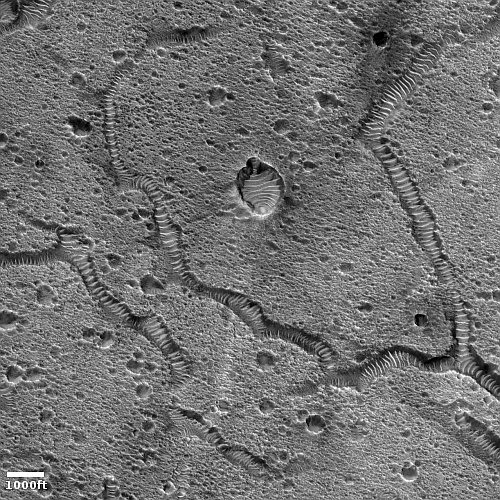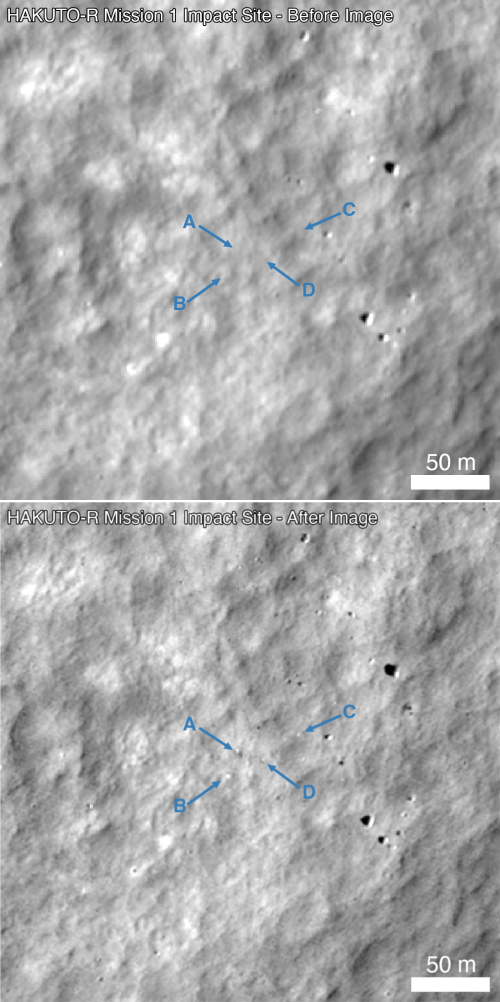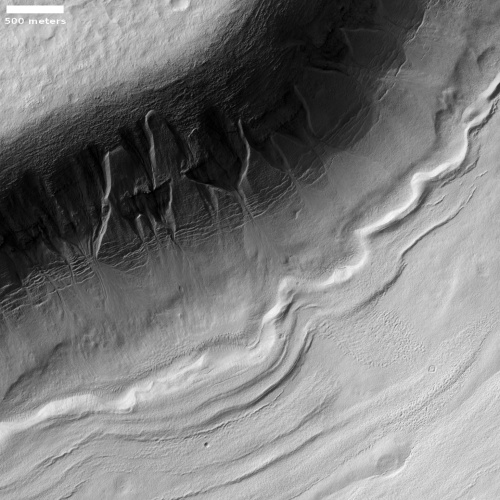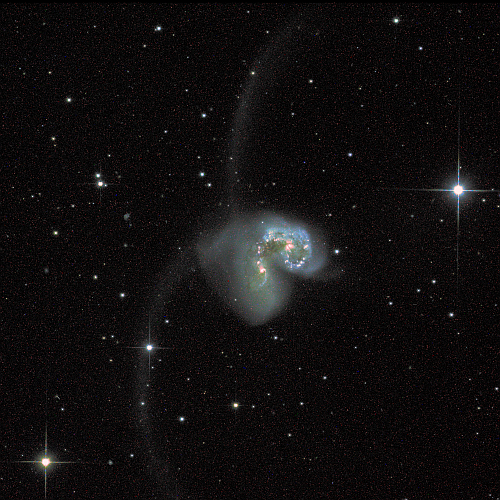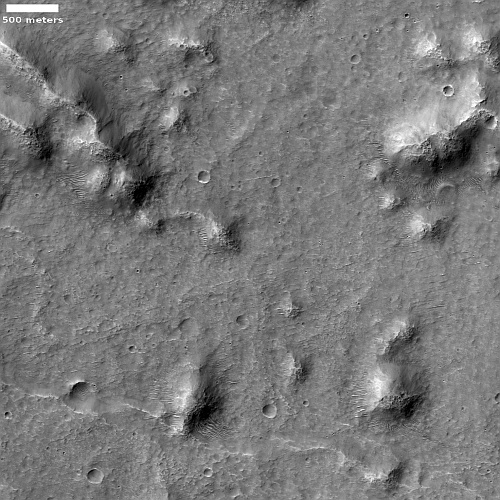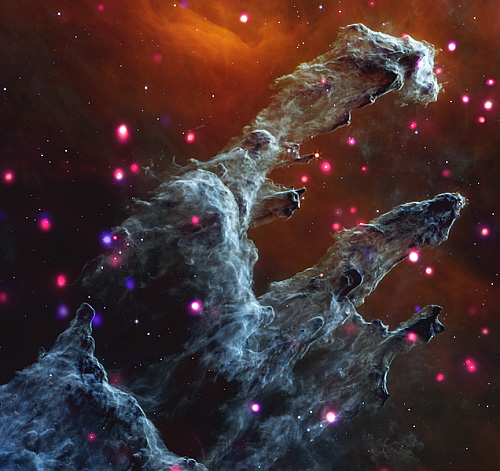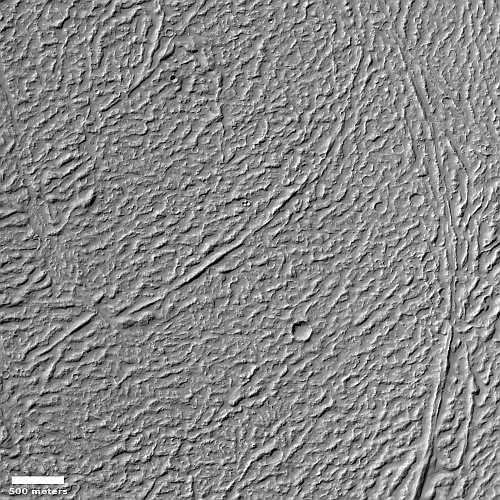A fractured spot in Mars’ northern lowland plains
Cool image time! The picture to the right, cropped, reduced, and sharpened to post here, was taken on February 16, 2023 by the high resolution camera on Mars Reconnaissance Orbiter (MRO). It shows a pockmarked flat plain with a scattering of meandering hollows, each filled with ripple sand dunes that make these depressions resemble at first glance the tracks of tires.
Obviously, we are not looking at evidence of a past giant vehicle moving across the ground on Mars. The MRO science team labels these “fractures,” suggesting some past geological process caused the surface to crack in this manner, with those cracks widening with time due to erosion or sublimation.
The location of course tells us something about that process.
» Read more
Cool image time! The picture to the right, cropped, reduced, and sharpened to post here, was taken on February 16, 2023 by the high resolution camera on Mars Reconnaissance Orbiter (MRO). It shows a pockmarked flat plain with a scattering of meandering hollows, each filled with ripple sand dunes that make these depressions resemble at first glance the tracks of tires.
Obviously, we are not looking at evidence of a past giant vehicle moving across the ground on Mars. The MRO science team labels these “fractures,” suggesting some past geological process caused the surface to crack in this manner, with those cracks widening with time due to erosion or sublimation.
The location of course tells us something about that process.
» Read more

